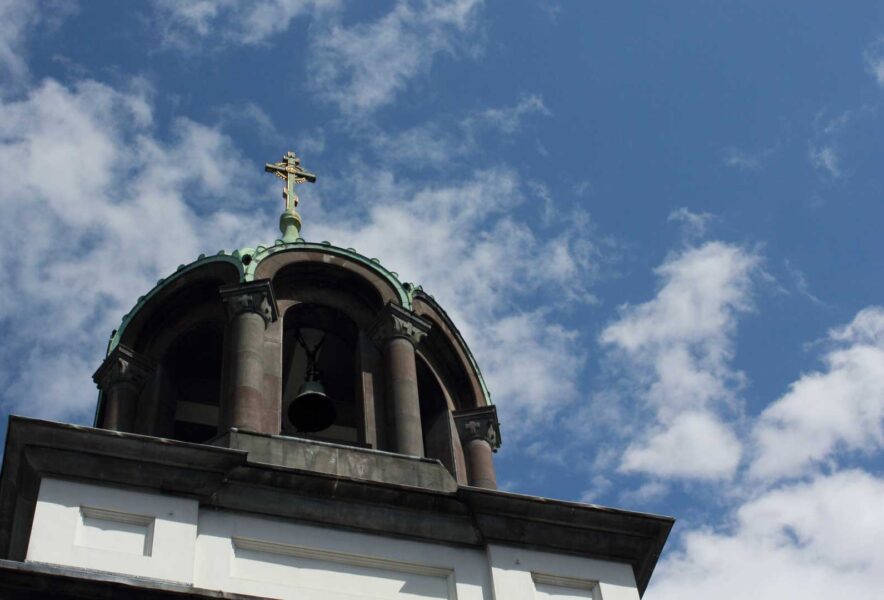Nikolaido is located down the hill from Ochanomizu Station on the JR Yamanote Line, in the building district of Surugadai, Kanda.
Its official name is Tokyo Resurrection Cathedral of the Japan Orthodox Church.
The light green dome of the cathedral is majestic and different from its surroundings.
We would like to introduce the Nicolaido, a landmark of the town.
History
A cathedral of prayer that has overcome many trials
Construction of Nikolaido was begun in 1884 by Archbishop Nikolai Kasatkin, who came to Hakodate from Russia as a priest, and was completed in 1891 after seven years of work with donations from the Russian and Japanese faithful, becoming the head temple of the Japanese Orthodox Church.
The Orthodox Church, also called the Eastern Orthodox Church, spread from the Middle East, where Christianity was born, to Greece, Eastern Europe, and Russia. Together with the Roman Catholic Church, which spread mainly in Western Europe, it is the oldest church that forms the basis of Christianity.
When the Russian Revolution of 1917 brought communism to power, the Russian Orthodox Church became a target of oppression, and the Japanese Orthodox Church was cut off from support by its home country of Russia.
Later, the Great Kanto Earthquake of 1923 collapsed the dome of the cathedral, leaving only the foundation and brick walls, and the ordeal continued. Bishop Sergii, the successor to Bishop Nikolai, held services for the congregation at the cathedral in Matsuyama, Shikoku, and waited for the reconstruction in 1929. The reconstructed cathedral was able to escape the air raids of World War II, and Sunday school and other church activities were held there quickly.
Designated as a National Important Cultural Property in 1962. It is the oldest building among stone cultural properties.
Every Sunday morning at 10:00 a.m. when services are held, the bell is rung for about 10 minutes, and prayers for peace are still offered.
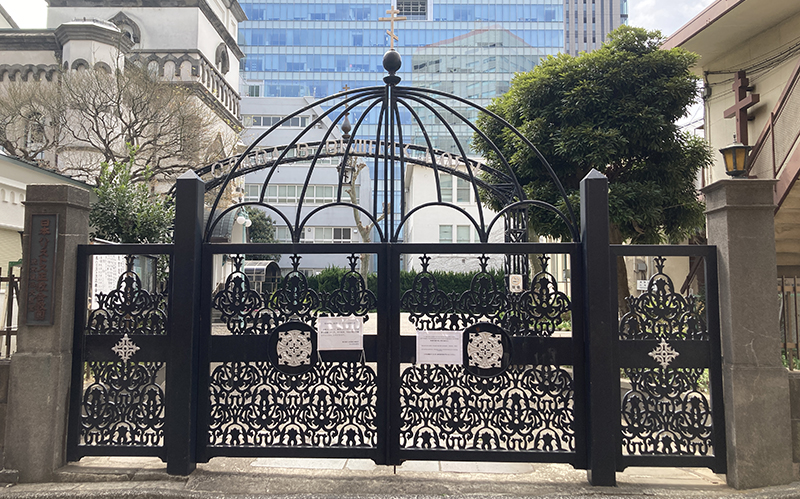
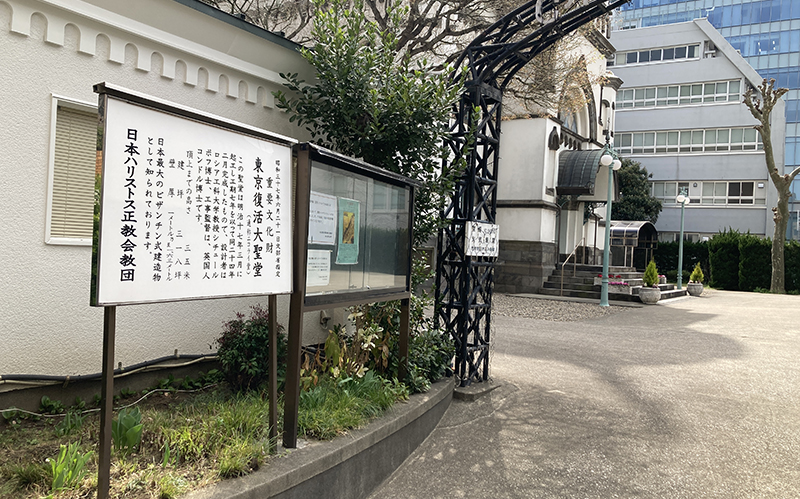
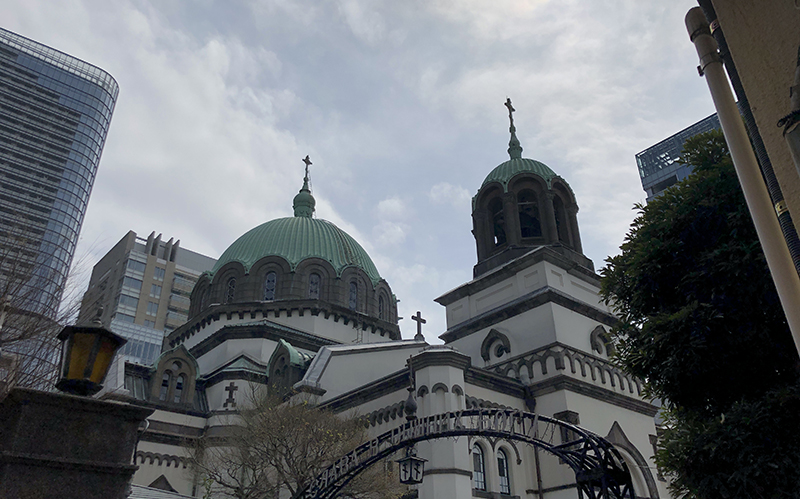
Sights to see
Architecture
Russian architect Mikhail Shturpov designed the original plans for the Nikolaido, and British architect Josiah Conder designed and supervised the construction. Shinichiro Okada, who worked on the Nakanoshima Public Hall in Osaka and the Kabuki-za Theater in Tokyo, was involved in the restoration design after the Great Kanto Earthquake.
At the entrance is an eight-pointed cross. The short horizontal line is said to represent the sin of Jesus, and the diagonal line below represents the footstool.
Its greatest feature is the contrast between the beautiful emerald green of the dome and the pure white walls, with the cross shining above the main cathedral building and the bell tower. The dome, with its apex bell tower, is 35 meters high, making it the largest Byzantine-style building in Japan.
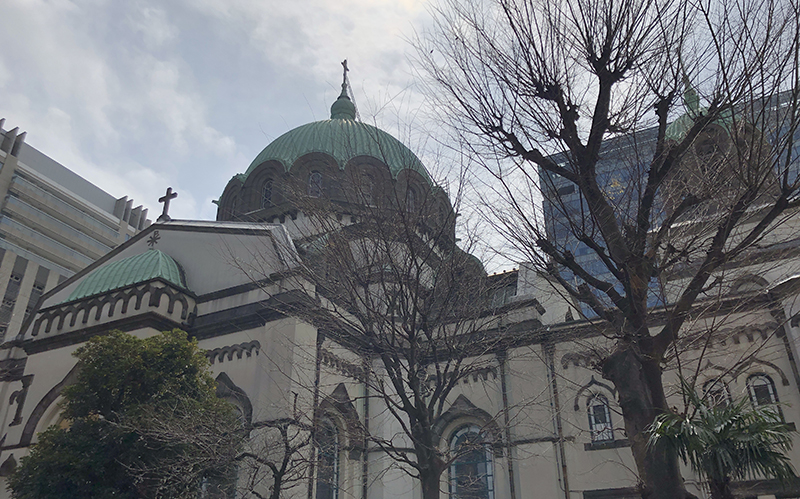

Cathedral visit
You do not have to be a member of the congregation to visit the Nikolaido and observe the service. Non-members of the congregation are welcome to visit the back of the synagogue. During the visit to the service, a guide will give you a lecture about the Orthodox Church so that you can deepen your understanding even if you have no knowledge about Christianity.
In the areas open to public worship, icons with pictures of saints are placed and candles are lit. You will be surprised to find that there are no couches, as Orthodox churches conduct their services standing up. Note the chants, which are sung a cappella, unlike Catholic chants or Protestant hymns. Listening to the clear voices of the women, you will feel purified and refreshed in body and soul.
Currently, the temple is closed for worship due to the Corona Disaster. Please check the official website.
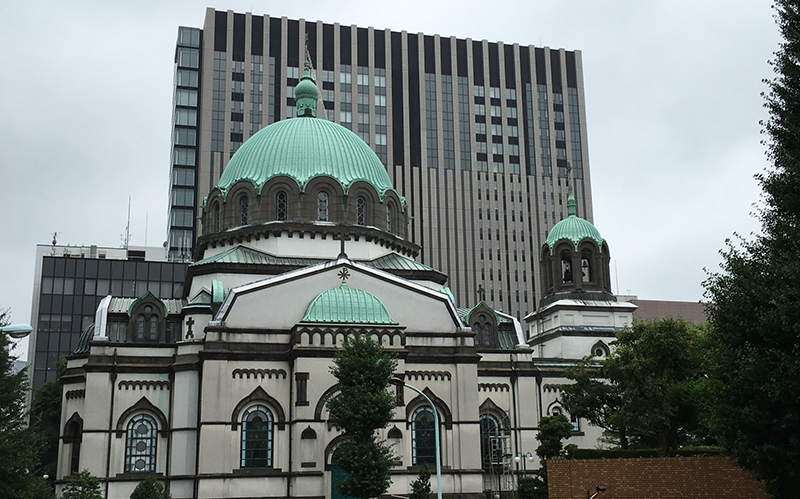

Icon and Rin Yamashita
Inside the Nicolaido, the many icons are a sight to behold.
Icons are paintings for worship, depicting images of Christ, the Virgin, and saints. The majestic icon painting was strongly influenced by medieval Italian art and flourished in Russia, where Greek Orthodoxy became the state religion in the 10th century. Today, they are being reevaluated as purely artistic works, divesting themselves of their religious connotations.
Yamashita Rin (1857-1939), the first Japanese icon painter, was a female member of the Orthodox Church. She studied the art of icon painting at a convent in Russia, returned to Japan in 1883, and painted icons for the completion of the Nicolaedo, but they were destroyed in the earthquake. However, it was lost in the earthquake. Yamashita Rin’s icons are not signed, and she devoted her life to creating icons while single-mindedly following her teachings. The more than 300 icons painted by Rin quietly bring comfort to people in Orthodox churches in Japan.
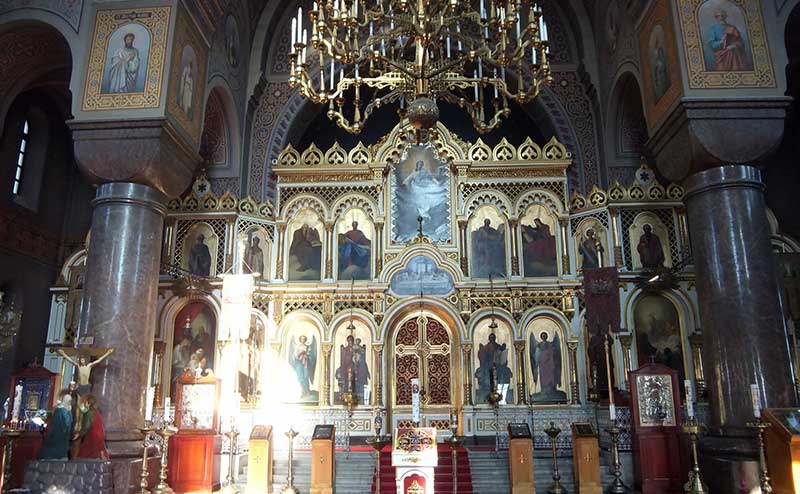
Image of the icon (not inside the Nicolaido)
Access to Nikolaido
Addoress:4-1 Kandasurugadai, Chiyoda City, Tokyo
Parking around Nikolaido
Nikolaido Official Website
Official site: http://nikolaido.org/
